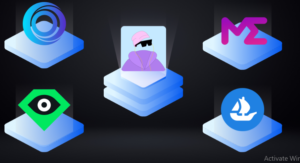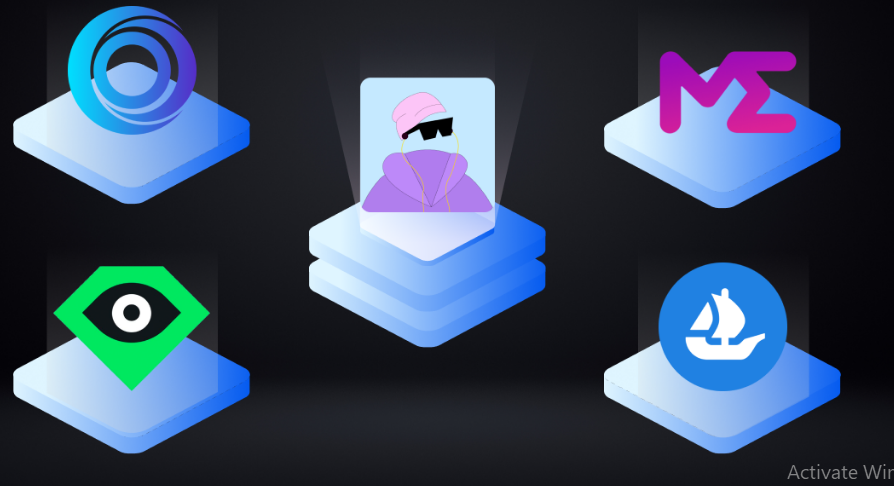Buying your first NFT can sometimes sound confusing for any beginner, especially outsiders of the concept. NFT marketplaces are online websites where one can purchase, sell, or even trade digital assets in the form of non-fungible tokens. They thus provide a wide swath of unique art, collectibles, and virtual items that appeal to many collectors and enthusiasts.
First of all, one should be interested in choosing a marketplace when buying, based on their personal interest in the type of NFTs they wish to collect. Familiarizing yourself with different platforms and knowing what each one has to offer will make the process of buying easier. Of course, with a little guidance, anyone can master these marketplaces.
Key Takeaways
- NFT marketplaces are places where users can buy and sell digital assets.
- It could be very important to select a proper platform when considering buying an NFT.
- The procedure for getting into NFT is quite clear so that a beginner may be able to succeed in it.
Understanding NFT Marketplaces
NFT marketplaces are platforms that enable users to buy, sell, and trade NFTs. These marketplaces differ in features and type, hence meeting various needs in the NFT space.
Definition and Function of an NFT Marketplace
An NFT marketplace is an online space created for trading NFTs. It enables its users to sell, buy, auction, and even create digital assets whose ownership is guaranteed by blockchain. Every NFT is uniquely recorded on a blockchain with information that assures their authenticity and ownership.
Marketplaces act as an intermediary between the buyer and the seller. They offer the necessary infrastructure for a transaction to take place in a secure manner. They allow their users to browse through the provided digital art, music, collectibles, and virtual real estate. The ease of use is an important feature that allows every person to participate in the NFT market.
Common Features of NFT Marketplaces
Commonalities are usually present between the various NFT marketplaces. First, most of the platforms have an easy-to-navigate interface, which helps their users find NFTs in the shortest time possible. They also feature search tools and filters for sorting by categories like price, popularity, or type.
Countless numbers of them support wallet integrations, hence allowing the integration of digital wallets for transactional purposes. Besides this, they offer secure payment options, mostly in cryptocurrency.
Profiles showing the NFTs in possession, as well as transaction history, can be a common feature within user accounts. Other platforms may also feature communities for allowing users to communicate through forums or with each other through chat features.
Type of NFT Marketplaces: Exclusive vs. Open Platforms
The general categorization of NFT marketplaces would fall into two types: exclusive and open platforms.
Exclusive platforms are run for specific target audiences. They could include the biggest artists and high-end digital art. Membership to the platform might require an invitation or qualification. Some examples are SuperRare and Foundation.
Public platforms are open to all. They allow all users to mint and sell NFTs with a bare minimum of regulations. OpenSea and Rarible are some marketplaces that most often fall under this category. Most of the time, they will accept more forms of content to be created on them. They cannot maintain the exclusivity as high-end platforms, of course.
This diversity makes buyers much more particular about which marketplace they visit, since the content will vary from one marketplace to another, too.
Buying Your First NFT
Basically, purchasing an NFT might seem challenging; however, in real life, if one is led through the right steps, then, really speaking, it gets easier. The following section focuses on the way to go about setting up a digital wallet, then selecting a marketplace, knowing the value, conducting the processes for transactions, and safeguarding investment.
Setting Up a Digital Wallet
To buy an NFT, one needs to create a digital wallet first. The wallet is a safe container that holds both cryptocurrencies and NFTs. Popular options to create a wallet include MetaMask, Coinbase Wallet, and Trust Wallet.
Setting up a wallet typically involves downloading an application or a browser extension, creating an account, and protecting that account with a strong password. It is highly important to write down recovery phrases provided during the creation of the wallet.
This recovery information is useful in case the user forgets the password or loses access to the device.
Marketplace Selection Based on Choice
Not all marketplaces suit your requirement. Among the many available options, some popular choices include OpenSea, Rarible, and Foundation.
Each of the marketplaces has some unique features. For instance, OpenSea supports numerous NFTs, while foundation support high-quality digital artworks.
While selecting, one also should take into consideration fees and types of NFTs available and reputation of community. Users often compare a few options before making a decision.
Understanding Value and Rarity
In many ways, value about an NFT is subjective. An element of an NFT’s perceived value often comes from its rarity. The price of an NFT often derives from how unique it is.
Users should be very heedful of the number of editions. One can usually expect that either very limited edition or the only piece in an edition may have considerably more value.
You may also want to dig up information on the reputation of the creator. More experienced artists will likely produce more desirable NFTs.
Knowing the trends can also help you make good choices. Some websites, such as NonFungible and CryptoSlam, show sales and value information.
Transaction Processes and Gas Fees
Once an NFT is chosen to purchase, the buyer will need to carry out a transaction. The process usually begins with attaching a digital wallet to the preferred marketplace.
For buying an NFT, gas fees are included. It is a form of transaction fee that one has to pay for processing something over the blockchain.
These gas fees can vary considerably based on network congestion. The buyer must ensure that he or she looks at the total cost of the purchase with these fees before finalizing the buy.
Users would even want to set a certain price for gas so as not to overpay in transactions.
Securing Your Investment
Digital security, therefore, plays an important role in protecting investment in an NFT. A highly unique and strong password must be used while establishing a wallet.
Buyers should also opt for two-factor authentication, if ever possible. There can be a second layer, which raises the complexity factor of unauthorized access.
Backup Wallet Information Safely: Therein lies the prevention of loss. The private keys must be kept online to avoid potential hacking issues.
Regular check must be done on updates regarding new wallet software and marketplaces. These may update better features to securely lock assets.

Also Read :
